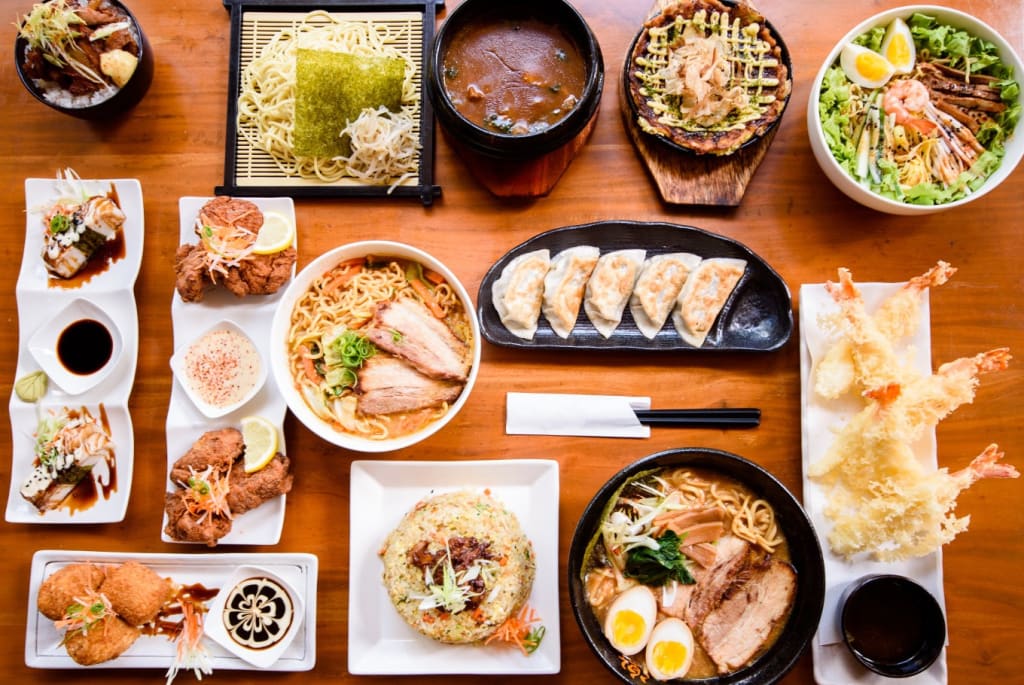
The cuisine of Japan is world-renowned for its highly skilled preparation method and unique presentation. The Japanese diet is low in calories and cholesterol and has high fiber content. Rice is the main staple and is present in almost every meal. Noodles are served cold or hot and usually are presented with many different types of accompaniments and dressings.
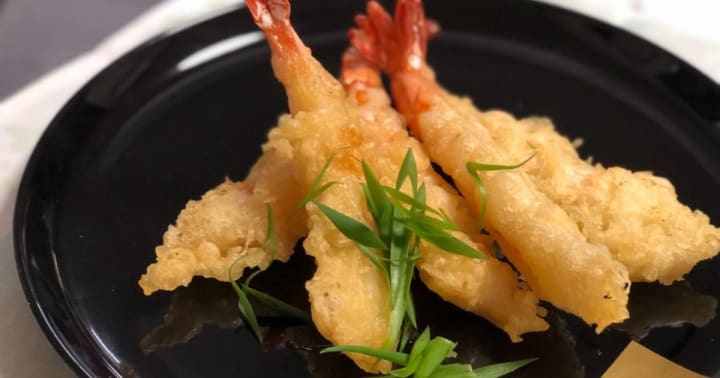
Other ingredients include fish, soybean products, beans, seaweed, vegetables, and fruit. The methods of preparing Japanese food include Teriyaki or steamed food, Tempura or deep-fried food, and Yakitori or broiled food. There are also one-pot dishes that round off a large part of the Japanese cuisine.
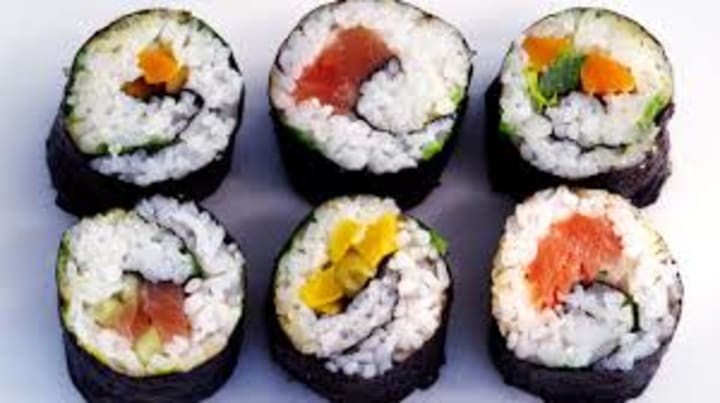
Food is served up with chopsticks and the dishes that the food is placed in usually fit the food perfectly in both shape and size. Sushi consists of rolls that include raw fish and cold cooked rice and contains sushi vinegar. The rolls can also include vegetables.

Sashimi consists of fine cuts of fish and seafood that are usually raw. However, when it comes to eel and octopus these are prepared with lightly vinegared rice and served with daikon (an East Asian radish). Both are dipped in wasabi (green Japanese horseradish), pickled ginger, and soy sauce combined or left separate.
Zensai is a Japanese term for appetizers. Tempura is seafood, vegetables, mushrooms, and other pieces of food coated with tempura batter and deep-fried. It was introduced to Japan by the Portuguese in the 16th century and has internationally become one of Japan’s most famous dishes.

Gyoza dumplings are made with a filling of minced vegetables and ground meat. They were introduced to Japan by the Chinese. In Japan, gyoza are usually fried.
Appetizers:

Cucumber Stuffed with Crab and Ginger – The ends of a large cucumber are cut off and then it is sliced lengthwise and pried open. The rind underneath must not be broken. The inner pulp and seed are scooped out. The cucumber is filled with a mixture consisting of sushi rice, lump crabmeat or salad shrimp, wakame seaweed, and pickled red ginger. After the cucumber has been stuffed the mixture is rightly pressed in and the two halves of the cucumber are put together. Round slices are placed on a serving dish.

Japanese Eggplants with Garlic, Olive Oil, and Tomatoes – Cut the eggplants in half and place them on a lightly oiled roasting pan. Drizzle olive oil, garlic, thyme, and salt over the halves and cover them with aluminum foil. They are baked until they're golden brown. The eggplants are served with tomatoes and drizzled with olive oil, lemon juice, salt, and pepper.
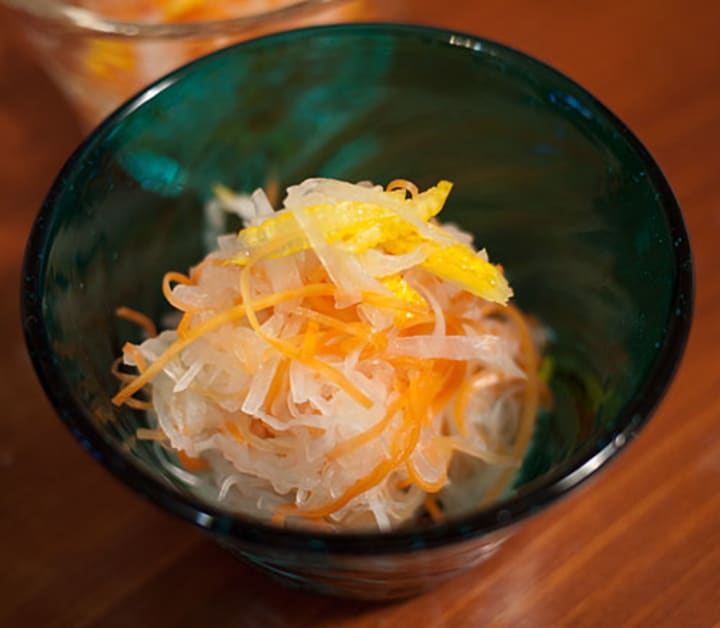
Japanese Pickled Daikon and Carrot Salad – The daikon radishes and carrots are peeled and grated into a bowl. Then they're sprinkled with salt and put to rest for 30 minutes. Afterward, water is squeezed from the vegetables. Vinegar, soy sauce, ginger, and sugar are combined in a bowl and stirred until the sugar dissolves. The vegetables are added and mixed through and refrigerated for 8 hours.

Sauteed Zucchini – Zucchini and onions are cut into small pieces. Then sauteed in a pan with olive oil, sesame seeds, butter, soy sauce, and salt and pepper. Cook until the zucchini and onions are tender and browned.
Soups:

Egg Drop Soup (Tamago Toji) – Heat chicken or vegetable stock and stir in salt and soy sauce. If you like you can use mushrooms and slice them thinly. Add them to the stock and simmer and bring to a boil. Stir the soup clockwise and add a whole beaten egg then remove the soup from heat and stir it counterclockwise. Add coriander and chopped chives and cover the pot for 30 – 40 seconds. Uncover and add regular black peppers or Szechwan peppers. Serve immediately.
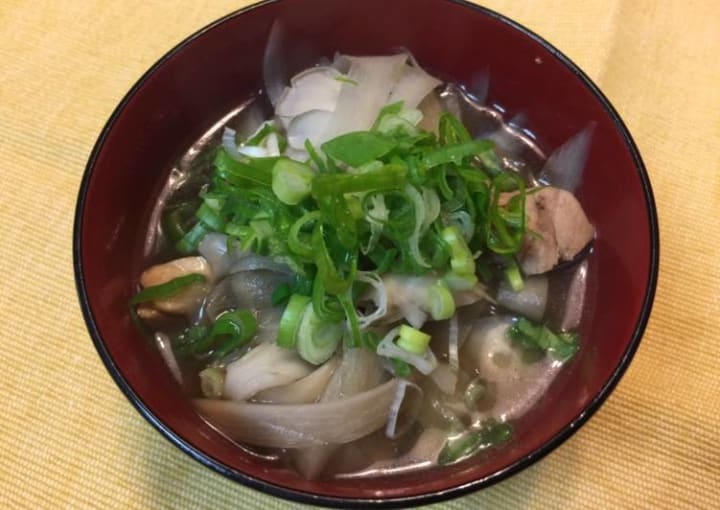
Japanese Chicken and Mushroom Soup – Make stock from chicken wings. Put wings to boil adding water, green onions, ginger root, and salt. When done strain the soup to make a clear broth. For the soup itself, a chicken breast is cut into long slivers and placed in a bowl. Ske is poured over the chicken and left to marinate for 30 to 40 minutes. Mushrooms are quartered. After the marinated chicken is drained the sake is reserved, The chicken pieces are rolled in rice flour or cornstarch. Then dropped into boiling water and ed 10 minutes. When ready the chicken gets removed with a slotted spoon and set aside. Bring chicken stock to a boil, add reserved sake, and salt to taste. Add mushrooms and simmer 5 minutes. Add chicken pieces. To serve place chicken and some mushrooms in individual bowls and fill with broth.
Salads:

Cold Sesame Noodle Salad – Toast sesame seeds until lightly browned then bland them with oil. Soy sauce, mirin, which is similar to sake but has a lower alcohol content, and vinegar are added and processed. The dressing is set aside. Soba noodles are boiled al dente and drained. Add cold water and swish noodles about. Noodles are transferred to a mixing bowl and tossed with the dressing. Add radishes, scallions, sprouts, and unprocessed sesame seed. Toss and serve.

Japanese Cabbage Salad – The dressing for the salad is prepared with sugar, oil, salt, pepper, and rice vinegar. Sesame seeds, slivered almonds, and crumbled ramen noodles are browned then drained and a steamed chicken breast cut in small pieces, chopped cabbage, and green onions are added and mixed together. Toss with dressing and let stand overnight.

Sunomono Salad – Cook sushi rice. Meanwhile cut up red, yellow, and orange peppers into pieces. Cut unpeeled cucumbers into slices and grate carrots. Add rice vinegar to the rice and mix then add all the vegetables. Put soy sauce into a closed container with wasabi. Japanese horseradish and shake until the wasabi has dissolved. The soy-wasabi sauce is then mixed into the rice. Sushi seaweed paper is crunched up on top of the salad and served.
Meat has been eaten in Japan in larger amounts only since the second half of the 19th century. Now there is a variety of meat dishes and many dozens of kinds of fish.
Meat dishes:

Beef Misoyaki – Boneless ribeye steaks are sliced very thin. Sesame seeds are toasted and ground fine then placed in a bowl and mixed with miso, soy sauce, sugar, and sake to the consistency of runny peanut butter. The mixture is added to the meat as a marinade. Marinade the beef for up to 1 hour. Then cook it in a skillet and serve with steamed rice.

Beef Teriyaki with Cucumber Salsa – Beef is marinated in a mixture of soy sauce, sherry wine, crushed garlic, grated ginger, and sugar. Salsa is made from cucumber that has been peeled and seeded and cut into cubes, sliced bell pepper, spring onions, and combined in a salad bowl. In a saucepan sugar, vinegar, and a small amount of water is set to boil stirring until the sugar has dissolved. Squeeze in lemon juice. Let the mixture cool and pour over the salsa. The beef is cooked to ones liking then sliced into strips. The marinade used for the steak is boiled and kept warm until serving. Serve steak on a bed of rice, top with marinade and salsa, and sprinkle with sesame seeds.

Japanese Mum’s Chicken – Take chicken drumsticks with the skin on and place in a saucepan with water, balsamic vinegar, soy sauce, sugar, garlic, and chili pepper. Boiled for 20 minutes and then cooked until the liquid has reduced to a sticky glaze. Arrange chicken on a platter remove garlic and chili and spoon the glaze on top.
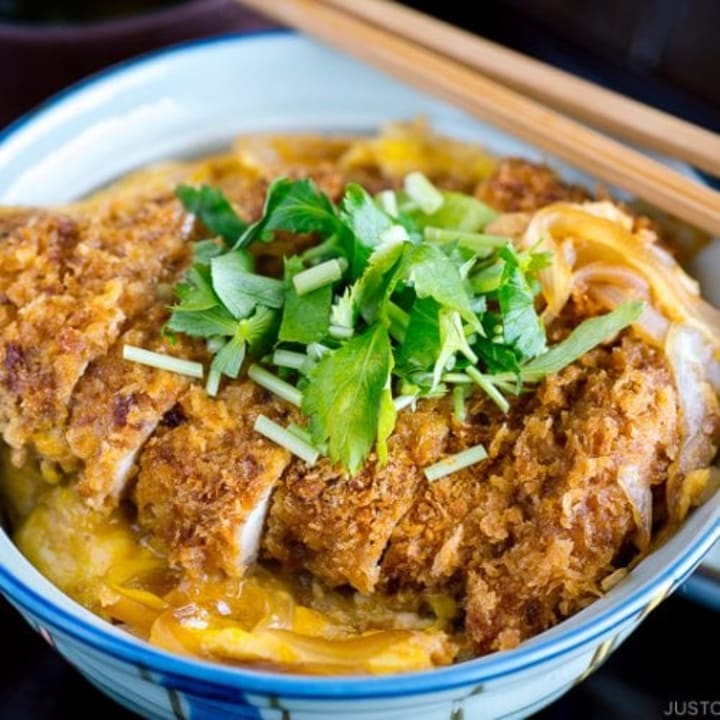
Katsudon – Basmati rice is prepared and kept warm. Simmer onions, chicken broth, mirin, soy, and seasonings for 15 minutes. Meanwhile, beat six eggs in a bowl. On another plate mix flour, salt, and pepper and pour panko (a variety of breadcrumb used in Japanese cooking) on another plate. Dredge pork or chicken cutlets in flour, dip in eggs, dip in panko, eggs, and again panko. The double-dipping makes a nice crust. Cook in oil until browned and drain on paper towels. Dip cutlets into the broth, warm for 1 minute, slice and serve over rice, ladle over onion broth and sprinkle with scallions.

Sake or tea are the usual beverages accompanying a meal. Sake is served from porcelain carafes and drunk in little decorative cups.

Green tea has its own special pot. Sake is often heated and served warm. Green tea is drunk daily before, after, and during a meal.
About the Creator
Rasma Raisters
My passions are writing and creating poetry. I write for several sites online and have four themed blogs on Wordpress. Please follow me on Twitter.


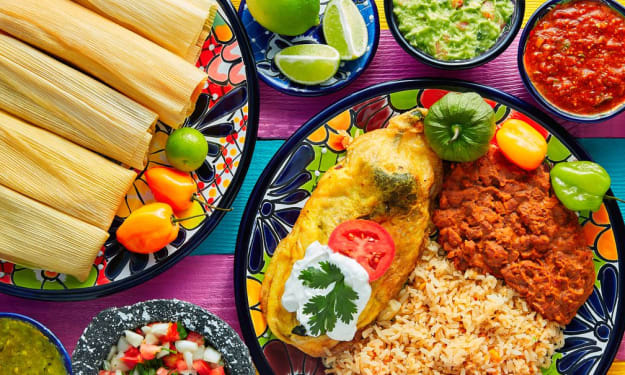



Comments
There are no comments for this story
Be the first to respond and start the conversation.